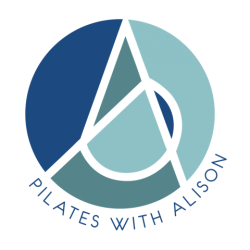Becoming a Pilates teacher has changed my life. In addition to teaching group classes, Pilates lends itself to 1-1 sessions. Based on deep body conditioning and traditionally used for injury rehabilitation by dancers, Pilates has migrated and become a popular effective exercise method alongside weight and aerobic training. My classes are popular with older and younger populations and I regularly receive requests for 1-1 teaching sessions and referrals from a chiropractor based on site where I work. Clients may have lower or upper back problems and frequently have poor core strength, hip flexibility and contemplating a change.
Planning a Pilates or personnel training exercise programme specific to a client’s requirements, focusing on improving core, hip and back strength improving pelvic stability, flexibility and joint mobility is exciting and daunting. Pre assessments may include functional movement assessments, (movement ability within an individual is assessed and then scored accordingly and a course of action is developed, aiming to correct the issues.(Cook.et al.2010.) A Postural assessment where individual posture misalignment can be highlighted..
I have encountered a variety of issues or problems during planning and delivering my sessions. Below are some of these;
Setting Realistic Goals
An important part of planning an exercise programme. The goals should be discussed with the client and set by both the client and trainer. Finding out what is expected from the programme, and specific improvements they would like to see. From theses goals can be set. Be prepared to revisit these goals and reevaluate if they are reached or becoming distant.
To create an individual training plan and amend it as required is so important to gaining clients confidence and satisfaction. It is not an all rule for one, and individuality is the key to success. So, refocus and be prepared to change if needed.
Motivation
Your client emotions and energy levels are not always going to be the same each session, they may just need to talk for a while, be emotionally or physically tired, or are lacking energy to exercise. Be positive and encouraging listen and feedback to you client, promoting confidence and intrinsic motivation ( the client chooses to exercise) Listening to your client is essential (Brehm 2014,p.48)
Injury
My client had had a fall one week, we overcame this by doing a seated exercise class, adjusting exercises and session to suit client, resulting in boosting confidence and energy levels (Waters et al.2011)
Be Flexible
Being able to restructure the session to accommodate situations that arise . A trainer needs to adaptable to change and adjust so that the client can continue to train and enjoy it. I have planned sessions and had to change when I realised it’s just not going to work that day, regressing to a previous session or simplifying the session.
Summary
Be prepared to change, always work with your client, accounting for change in mood and lifestyle. Be realistic It is not a quick fix, and progression may seem slow, therefore setting goals that relate to the client is essential to keep up motivation and commitment.
Bibliography
Cook, G., Burton, L., Kiesel, K., Bryant, M. and Torine, J., 2010. Movement: functional movement systems: screening, assessment, and corrective strategies (Vol. 24). Aptos, CA: On Target Publications.
Waters, D L. Leigh A. Robertson, L. Beatrice, A. Herbison, P. 2011. Evaluation of a Peer-Led Falls Prevention Program for Older Adults. Archives of Physical Medicine and Rehabilitation, 92(10), 1581-1586
Brehm,B, 2014.Communication and teaching techniques. In Bryant.C,
Merrill.S,Green.D. ACE Personnel Trainer manual. 9th Edition.San Diaego:American council on Exercise,pp42-48.

